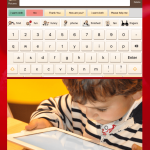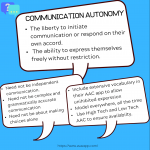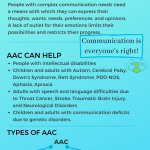How to have a memorable Halloween
Halloween is around the corner! And it is the most eagerly awaited holiday for children. This is the time for creating lasting childhood memories and flaunting costumes.
If your child falls in the autism spectrum, the evening could cause anxiety over unfamiliar looks, places and social interactions. But there is no reason why they can’t participate in the festivities (along with their AAC systems). With some preparation from our end, we can make it happen for our children!

There are a few ways to ease the child into being a part of this night of celebrations. Let’s tackle the big challenges in do-able ways:
- Costumes– Pick characters that are familiar to the child – or maybe let them pick a costume (perfect communication opportunity!). Let him play with the costume initially before trying it on. Start by wearing it over comfortable clothes. Avoid costumes which covers body parts that the child is particularly sensitive about. Once the child cooperates to put on the costume, start practicing to stay in it. Put the costume on for short and successful durations, like 2 minutes. Keep the child positively reinforced about staying in the costume.
- Do not push the child’s threshold for staying in it. Work it up over a duration of time. And much as we all love a costume coordinated family, make sure the primary caretaker is not masked or covered in make up, at least while going trick-or-treating. We need to keep some of the basic things familiar.
- Visualizing the world– Show your child pictures and videos of Halloween to familiarize him with what goes on. The world seemingly transforms in the night , with families walking around in costumes and decorations everywhere. You can find abundant videos of children trick-or-treating on YouTube. You can also begin decorating your house slowly, one halloween-themed article at a time, and well in advance, to help the child notice, and get familiarized.
- Social cues– Work with the child on why they should say “trick or treat”, explain how it is going to look outside a number of times, explain the costume and practice answering simple questions about the costume, and what type of candy they like, and thanking etc. Add appropriate responses to their communication system. Involve your friends or family and do a trial with costumes on. Walk with the child to these people and help your child get familiarised.
- The route– Based on how long your child can stay in the costume, you can use that as the guiding factor for planning the route and number of stops you make. If your child can comfortably stay in costume for 15 minutes, plan for 10 minutes. Being conservative in your estimate can help your child have a successful venture without getting overwhelmed. Take a route that is familiar to the child. Go on trial runs around the path you’ve planned. Go once with the costume on too, to get the feel for stepping out like this.
And all these trials and dry runs are going to keep your child prepared and excited. Make sure that you stop before the child gets overwhelmed and leave him with a lot of positive reinforcements. Keep in mind that any success, no matter how small, is still a success and a step in the right direction.
Happy Halloween!! ???? ????
(Reference: https://www.special-learning.com/blog/article/215)
Subscribe to the Avaz Newsletter
Join 4000+ fellow readers! Get latest articles straight to your inbox. Enter your email address below:
Popular Articles
- Building Literacy: Teaching Grammar to AAC Users
- Expansion of Language: Supporting AAC Learner’s Progress
- Avaz User Stories and Videos
- Avaz Joyful Reading: Resources for Shared Reading
- AAC Resources: Games, Activities and Communication Opportunities
- Avaz AAC User Stories: Why Nishant and his AAC System are Inseparable
- Downloadable Low Tech Communication Boards
- Get the Better of Reading Difficulties with MDA Avaz Reader
- AAC Apps for Adults with Acquired Communication Disorders
- Teletherapy: A smart way to facilitate remote speech therapy for adults and children


